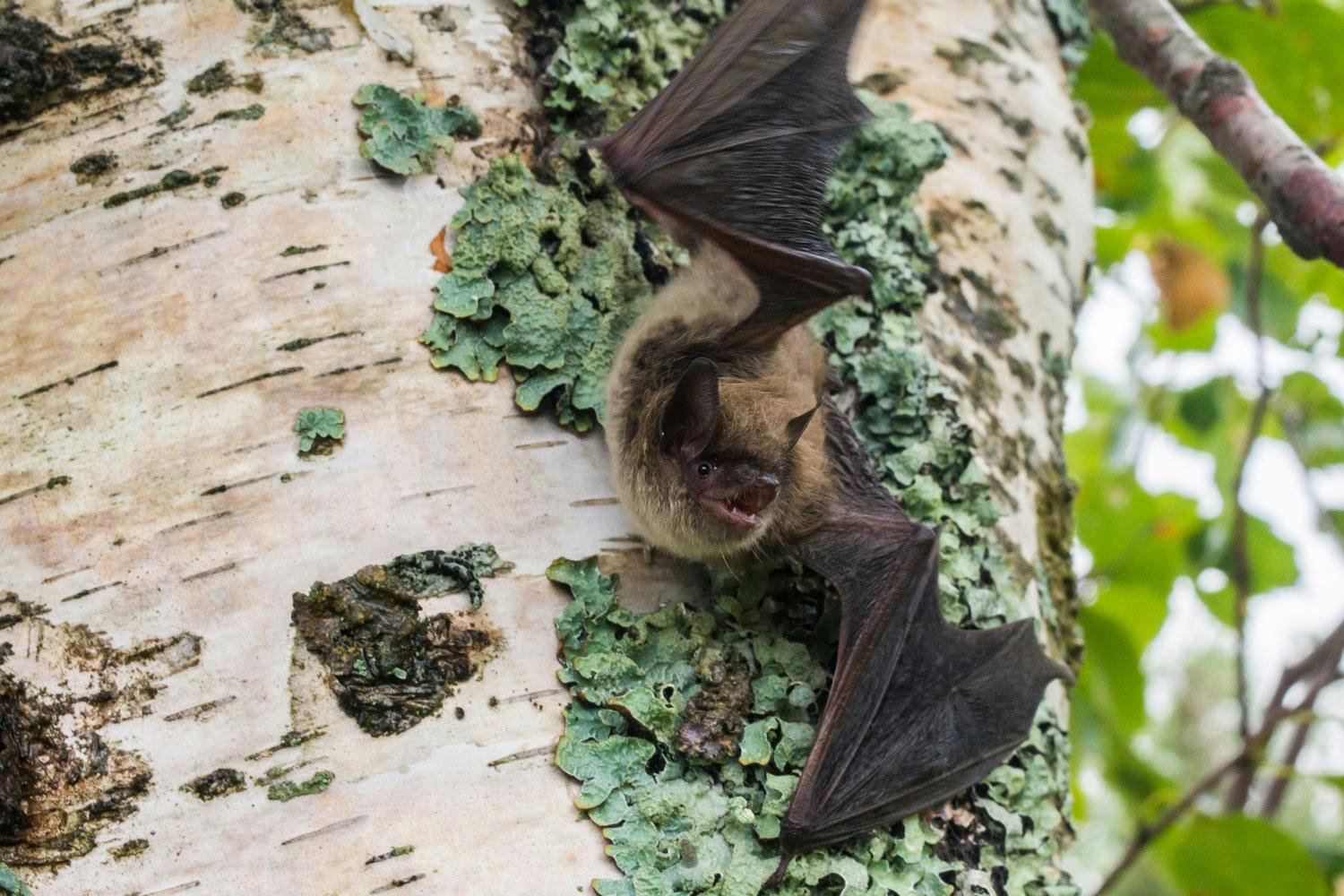Meet the Citizen Scientists Saving BC’s Bats
A network of enthusiasts aims to keep a deadly infection from wiping out these legends of the dark night.
Little brown myotis (Myotis lucifugus)
It’s the witching hour. As nearby Vancouver Island residents prepare to settle in for the summer night, Meaghan Cursons and I are on a cabin porch, watching the show begin.
The tiny microphone attached to Cursons’ iPad reveals the unseen, converting the echolocation calls that give bats their night vision into a graphic of sound waves. Most likely California myotis, she says, and lots of them. I look up to see bats swoop around us at speeds of up to 25 kilometers per hour, feasting their way through the twilight swarm of midges, mosquitoes, and moths. Judging from their acrobatic dips and dives, the bats are ravenous. I duck out the way. As they dive-bomb from their roosts in the bark of old trees, I wonder: how could I have ever missed such a show?
Bats can eat their weight in insects in one night, and that’s a good thing. I’m getting eaten alive; I take refuge inside the cabin, to observe from behind the sliding glass door.
Associations with vampires and the current coronavirus haven’t exactly helped bats’ reputation.
Cursons, as a seasoned observer of the night, remains bewitched, and unfazed by the biting swarm. As a bat naturalist and co-founder of the Cumberland Bat Project, she’s determined to engage the uninitiated like me. “Some people hate them, some people love them,” she says. “They capture the imagination regardless.”
The bats that night were plentiful. But bats in most places around the world are in trouble, as human activity continues to destroy the varied mix of places bats need to rest and roost throughout the year. Our stifling presence is also contributing to the spread of infectious diseases. In North America, a devastating fungal infection — likely introduced by humans — is creeping its way up the Columbia River Basin in the US.
White-nose syndrome kills a shocking number of North America’s bats in its path. And in lockstep, hundreds of enthusiasts like Cursons are helping teach us that we need bats, as they identify roost sites, count bats, and report deaths throughout the year as stand-ins for scientists.
Historically, the general public hasn’t understood bats well enough to appreciate their importance, and associations with vampires and animal-borne diseases like the current coronavirus haven’t exactly helped their reputation. But important they are, and researchers hope with more watchful eyes on them, we just might be able to reverse the fate of these legendary night flyers so they can get back to protecting our ecosystems.
Bats emerged roughly 60 million years ago and adapted to thrive on every continent except Antarctica. With over 1,400 known species, bats are the second most common order of mammal after rodents, but they’re far from pests. Though their nocturnal role supporting agriculture is far less appreciated than bees’, insect-eating bats remove staggering numbers of crop-eating pests from our ecosystems.
Bats can poop while flying over long distances, explains bat biologist Tigga Kingston, so seed-dispersal by fruit-eating bats aids the recovery of cleared and disturbed landscapes. Bat poop — known as guano — is a commodity, used as a nitrogen-rich fertilizer. And the nighttime nectar-eaters are responsible for pollinating more than 500 plants, including agave and some species of banana and mango.
“Bats have intrinsic value to us because of the incredible diversity they represent,” says Kingston, a professor at Texas Tech University who founded GbatNet, a global union of bat diversity experts. From what they eat, to where they roost, to their social systems, “they represent all ways that you can be diverse.”
The fungus has wiped out 90 to 100% of bats in some locations.
“We have very few wildlife in our urban environments that we actually depend on, and bats are them,” says Cori Lausen, a leading bat specialist with Wildlife Conservation Society Canada (WCSC). Lausen points to the diversity of bats supported by Vancouver’s greenscapes, whose eerie presence results in significant savings on pest control — billions’ worth across North America. And as more and more bats roost in human-made structures like bat boxes, they, in turn, depend on us.
Biologically speaking, bats break all the rules. Not only are they the only flying mammals, many have only one pup a year and can live up to 30 years old, unlike similarly sized mammals. As a result, populations are slow to recover from catastrophic events. Between habitat loss, pesticide use, predation by cats (yes, cats), and climate change, around 17% of bat species are viewed by the International Union for Conservation of Nature as vulnerable or endangered. Half of the 16 species that live in BC are listed as a conservation concern due to population declines. As barometers for the health of our ecosystems, bats are sounding alarms.
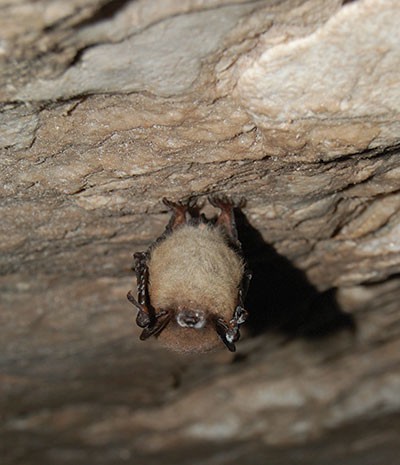
A myotis bat infected with white-nose syndrome hibernates in a Nova Scotia cave.
But it’s the fungal white-nose syndrome — which has been called North America’s “worst wildlife disease outbreak ever” — that has caught the attention of even the bat-indifferent. In 2006, the fungus Pseudogymnoascus destructans was found to make its home on the muzzle, ears and wings of cave-hibernating bats in the northeastern US. Just as bats are supposed to be conserving precious energy, the fungus rouses them, igniting erratic behaviour that burns energy reserves, ultimately killing them. The fungus has absolutely ravaged bat populations in the US and seven provinces in Canada, wiping out 90 to 100% of bats in some locations.
“We still don’t know if those numbers will ever recover, and how many decades it will take,” says Texas Tech’s Kingston. “That’s assuming … some resistance to the disease [develops].” Though the wider impacts of these losses are still being measured, an analysis by University of Chicago environmental economics professor Eyal Frank suggests a connection to human health. He found that farmers in counties exposed to white nose used 40% more insecticides than usual, and that the mortality rate among baby girls increased by 14.5%. (Impacts on male infant mortality were less clear, but pesticide-use and infant mortality have been previously linked).
In 2016, when white-nose syndrome was first detected in Washington state, a Canadian community-driven nonprofit quickly jumped into action. The BC Community Bat Program, as it’s now known, started in the Kootenay region in the early 2000s, when biologists saw community interest in conservation and wanted to see where they could take it. As interest grew, and as white-nose syndrome advanced, the organization morphed into a province-wide collective of independently funded community groups doing everything in their power to save bats.
BC’s bat efforts are powered by regular people who have grown to love these mighty little underdogs of the night.
For instance, they create tip sheets for landowners and pest control professionals, with support from the provincial government and established conservation charities like the Habitat Conservation Trust Foundation. Community “bat ambassadors” build bat boxes — structures of varying shapes and sizes that attempt to mimic a natural roost site, like the bark of old trees or an attic — install live bat cams, and educate the public with bat walks. They organize bat counts and collect fresh guano so scientists can identify which species are present by extracting DNA.
If necessary, they show landowners how to collect and send dead bats to a lab in Abbotsford, BC, for analysis. They’ve even structured a Bat Friendly Community program, a designation Richmond, Dawson Creek, and Peachland now share for taking steps like controlling unnecessary, cosmetic pesticide-use and protecting bat-friendly wetlands.
What makes BC’s bat efforts unusual is that they’re powered by regular people who have grown to love these mighty little underdogs of the night. “They’re in the communities, they’re putting on the events, they’re putting out the tables, putting up the posters,” says Lausen with the WCSC.
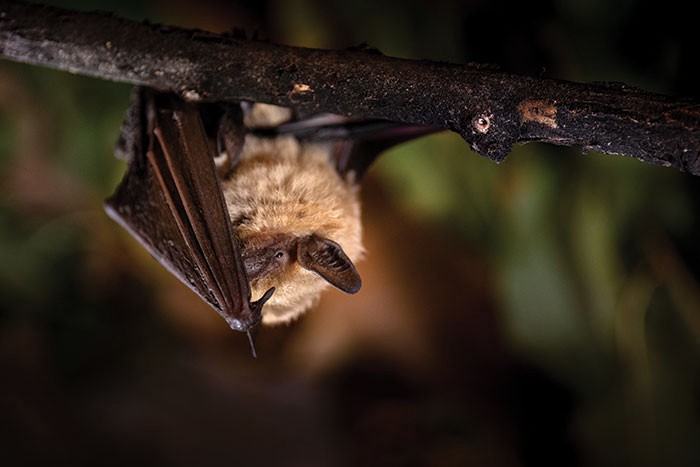
The big brown bat (Eptesicus fuscus) is among the 16 bat species present in BC.
Increasing awareness of these mysterious creatures is at the core of the community bat program, but the bat counts also contribute critical baseline data to conservation biologists. With confirmed cases now about 150 km south of the border, white-nose syndrome could appear in BC at any moment.
The province is home to 16 of Canada’s 19 bat species, and the trouble, according to Lausen, is that biologists know very little about them. None of BC’s species have been as closely researched as the little brown myotis in the east. But if researchers don’t know how and when they hibernate, or even where, they can’t respond effectively to the looming threat of white nose.
That’s where citizen science comes in. As scientists like Lausen fill the gaps in fundamental research, volunteers across the province are making observations about the health and locations of colonies on the ground.

The hoary bat (Lasiurus cinereus) is another of the 16 bat species present in BC.
Four times a year — twice in June before pups can fly and twice more between July and August when pups exit the roost — volunteers like Cursons and other bat watchers go to known roost sites at dusk, record the temperature and weather conditions, and how many bats fly out from the roost for one hour, or until it’s too dark to see. They fill out a data sheet and send it to the BC Bat program’s coordinator, Mandy Kellner, who inputs the estimated colony counts to build a province-wide data set. Thanks to volunteers from groups like the Cumberland Bat Project, the number of bat counts grew from 27 in 2012, to 873 counts at 337 roost sites in 2019.
Though citizen data isn’t perfect, “it’s the only thing we’ve got … in terms of monitoring for declines in populations,” says Kellner. “I don’t think there’s anything that we could do better realistically with just us trained biologists.”
This summer, as enthusiasts were counting bats around the province, researchers were in the field at known roost sites in Metro Vancouver testing another tool in the fight to save BC’s bats: a bat probiotic. Scientists at Thompson Rivers University’s microbiology lab and fungal biologists at McMaster University have developed a four-strain probiotic that inhibits the growth of P. destructans, building on findings by microbiologists at the University of New Mexico. They hope that by applying it to roost sites — in this case bat boxes — they can get the probiotic to grow on bats’ wings and help mitigate the disease.
To test it in the real world, WCSC conservation biologist Chris Currie, and his colleagues used a bike pump to distribute a mixture of clay and probiotic onto bat boxes, after first spraying them with distilled water so the mixture sticks. After a few weeks, they catch bats and swab them for samples to see if the probiotics have settled on their wings. Next year, they’ll test the bats again to see if it has stuck, and how they’re doing.
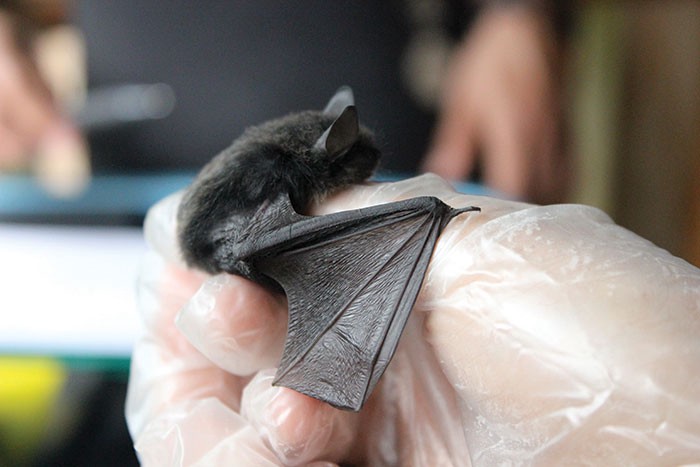
The yuma bat (Myotis yumanensis) is also found in the province.
“There’s a high chance in the next year or two years, three years, that these bats that we’re inoculating are going to go somewhere [and] pick up the [P. destructans] in the wintertime,” says Currie. Then, researchers will know if the experiment is working — and if it does, they can scale it.
“If we can help hundreds of thousands of females, the ones that are going to give birth to the next generation,” says WCSC’s Lausen, who is overseeing the research, “then we can actually reduce the impacts of white-nose syndrome.”
Members of the Cumberland Bat Project aren’t the only ones with a penchant for hanging out and recording bats around local wetlands and heritage buildings at night. Lausen describes a retired Vancouver police officer who took one bat walk before he got caught up in the “bat vortex.” Soon, he was volunteering for Lausen’s master’s student doing field research, and even took a course Lausen teaches on bat acoustics that’s geared toward biologists.
For Lausen, too, it was “love at first bite.” Right from the start of wildlife biology programs, she says, students get inundated with information about charismatic megafauna. “Yeah, yeah whatever, caribou, bear. Yeah, everybody cares about those,” she says laughingly. “But what about the ones that really need our help and that people think are ugly, but really they’re cute if you see them up close?”
This love of bats, coupled with the urgency of white nose, has fuelled some great successes. When Lausen and a handful of other bat researchers saw that time was running out to fill in the scientific gaps, they founded the BC Bat Action Team which she says now counts around 70 bat scientists, naturalists, and enthusiasts as core members. Together, they’ve charted a five-year action plan for the protection of bats, which federal and provincial environment ministries use to guide bat conservation plans.
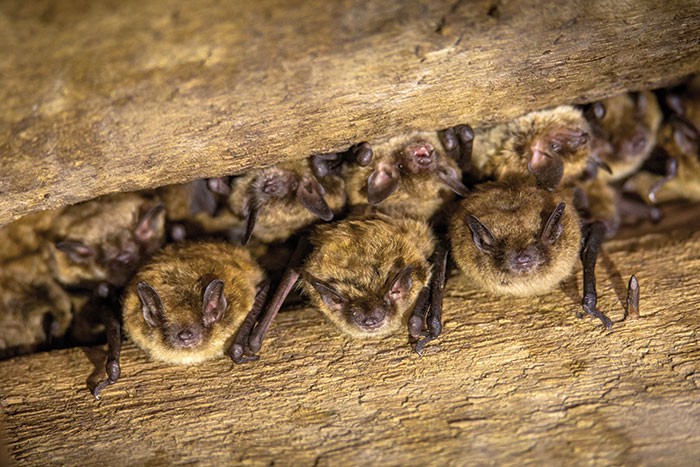
Little brown myotis (Myotis lucifugus) is also found in BC.
“It’s the only reason we’ve been able to make unbelievable strides in this province that we haven’t seen in other provinces,” says Lausen.
When SARS CoV-2 (the virus behind the current pandemic) was linked to bats, the BC bat community jumped in to convey that people aren’t catching Covid-19 directly from animals, and dissuade worried landowners from evicting night flyers. “The messaging was out instantly. And I don’t really feel in this province that we had a huge outcry from the public,” says Lausen. In other places around the world, news of the link between Covid-19 and bats lead to misguided bat culls.
While research and bat counts have slowed due to the pandemic, Lausen remains “cautiously optimistic,” especially when it comes to the multi-strain probiotic, and the citizen data informing their action plan. “I think ultimately we’re going to — and we have been — learning a tonne more about our bats in the west because of the citizen science initiatives,” she says.
We’re trying to give them enough time to deal with white-nose syndrome on an evolutionary scale, rather than be totally wiped out.
The WCSC’s Currie knows it’s impossible to inoculate every bat, and the disease is bound to cause harm. “We’re just trying to give them enough time to be able to deal with it on an evolutionary scale,” he says, “rather than just be totally wiped out.”
But no matter how many bats survive the coming years, people across the province are starting to see the night in an entirely different light. “These projects that are popping up are evidence of our deeper understanding of the importance of biodiversity to our own survival,” says my bat-watching companion, Cursons.
Back in Vancouver, I scroll through the upcoming bat events posted on Facebook, some in forests, some online. I click: Going.
